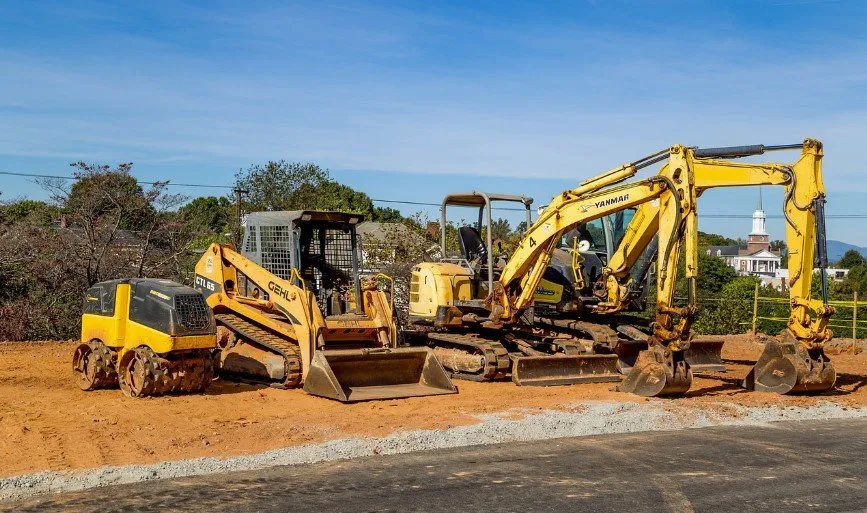The construction industry is undergoing a massive transformation, thanks to cutting-edge machinery that enhances efficiency, precision, and safety. Gone are the days of slow, labor-intensive processes—today’s advanced equipment, from autonomous bulldozers to AI-powered cranes, is revolutionizing project execution. These innovations reduce costs, accelerate timelines, and minimize human error, making large-scale builds faster and more sustainable. Whether it’s smart excavators with real-time data analytics or 3D printing for concrete structures, modern construction technology is reshaping skylines worldwide. In this article, we explore the game-changing machinery driving this evolution and how it’s setting new standards in the built environment.

The Rise of Smart and Autonomous Construction Equipment
Traditional construction methods relied heavily on manual labor, leading to delays, inconsistencies, and safety risks. Today, smart machinery equipped with IoT (Internet of Things) sensors, GPS, and AI is changing the game.
1. Autonomous and Remote-Controlled Machinery
Self-driving bulldozers, excavators, and compactors can now operate with minimal human intervention. Companies like Caterpillar and Komatsu have introduced autonomous dozers that follow pre-programmed blueprints, ensuring precise grading and excavation. These machines reduce fuel consumption, lower emissions, and improve worksite safety by limiting human exposure to hazardous environments.
2. Drones for Surveying and Monitoring
Drones provide real-time aerial surveys, mapping terrains in minutes instead of days. Equipped with LiDAR and high-resolution cameras, they capture accurate topographical data, monitor progress, and identify potential issues before they escalate. This technology saves time and reduces costly rework, while allowing your state of the art cranepads to do all of the hard work.
3. AI-Powered Predictive Maintenance
Modern construction equipment uses AI-driven diagnostics to predict mechanical failures before they happen. Sensors track engine performance, hydraulic pressure, and wear-and-tear, alerting operators to schedule maintenance proactively. This minimizes downtime and extends machinery lifespan.
Heavy Machinery Enhancing Speed and Precision
1. High-Tech Excavators with 3D Guidance
Excavators now feature integrated 3D machine control systems, allowing operators to dig with millimeter accuracy. These systems sync with BIM (Building Information Modeling) to ensure alignment with digital plans, reducing errors and material waste.
2. Advanced Cranes with Load Optimization
Tower cranes and mobile cranes now come with automated load-sensing technology, preventing overloading and improving stability. Some models even use AI to optimize lifting paths, reducing swing time and boosting productivity.
3. Modular and Electric Construction Equipment
Sustainability is a key focus, leading to the rise of electric excavators, loaders, and compactors. These machines produce zero emissions, operate quietly, and require less maintenance than diesel-powered alternatives. Volvo CE’s electric compact excavator, for example, is already making waves in urban projects.
Revolutionary Techniques: 3D Printing and Robotics
1. 3D Printing for Large-Scale Construction
3D printing is no longer limited to small prototypes—concrete 3D printers now construct entire buildings layer by layer. This method slashes material waste, labor costs, and construction time. Companies like ICON and COBOD are pioneering 3D-printed homes and commercial structures.
2. Robotic Brick-Laying and Welding
Robotic arms equipped with AI can lay bricks six times faster than human workers, with perfect alignment. Similarly, automated welding robots ensure flawless joints in steel structures, enhancing durability and reducing manual labor.
The Impact on Project Timelines and Costs
With these advancements, construction projects that once took years can now be completed in months. Key benefits include:
- Faster completion due to automation and real-time monitoring. The technology we have at our disposal allows us to save extraordinary amounts of time for project tasks.
- Lower labor costs as machines handle repetitive tasks.
- Enhanced safety with reduced human involvement in high-risk zones.
- Sustainable practices through electric machinery and waste-reducing tech.
The Future of Construction Machinery
The next wave of innovation includes:
- Fully autonomous construction sites with interconnected machinery.
- Augmented Reality (AR) for equipment operation, helping workers visualize tasks in real-time.
- Self-repairing materials integrated into machinery to reduce maintenance needs.
Conclusion
Today’s construction machinery is not just improving efficiency—it’s redefining the entire industry. From AI-driven automation to eco-friendly electric equipment, these advancements ensure projects are completed faster, safer, and more sustainably. As technology evolves, we can expect even smarter, more adaptive machinery that pushes the boundaries of modern construction.
For companies looking to stay competitive, investing in these innovations is no longer optional—it’s essential. The future of construction is here, and it’s powered by groundbreaking machinery.